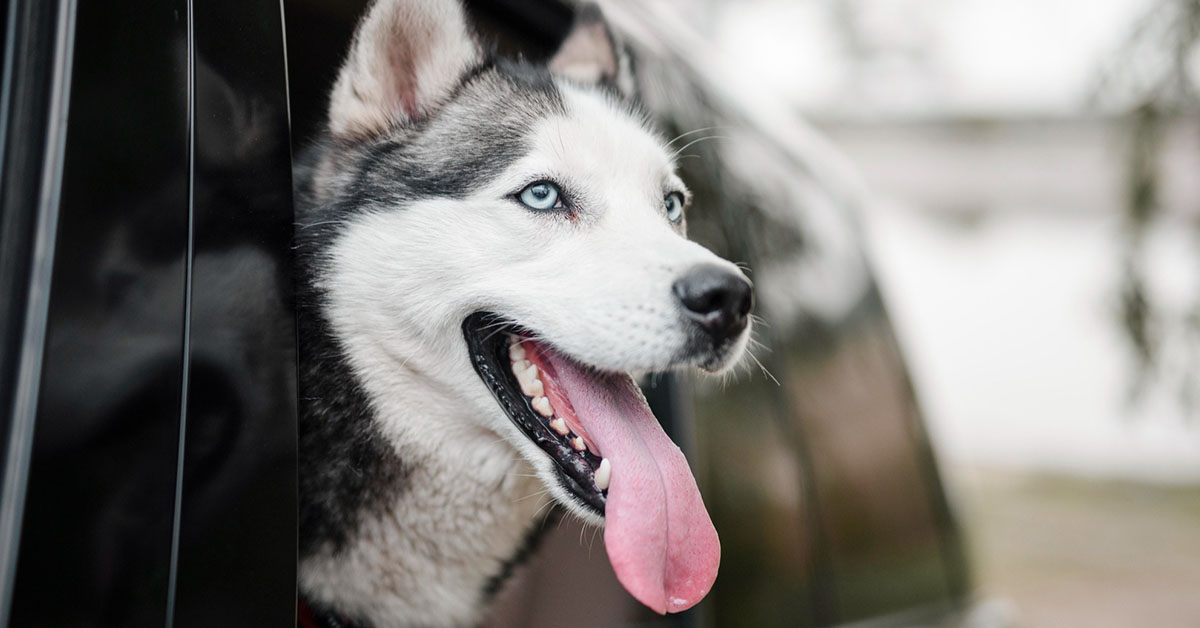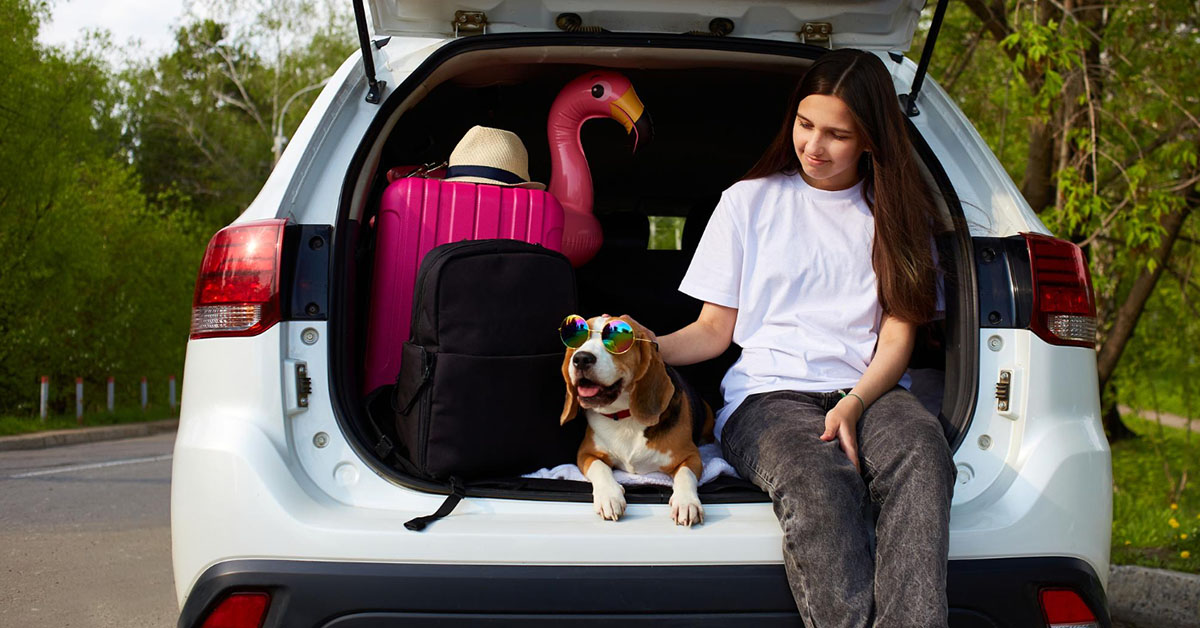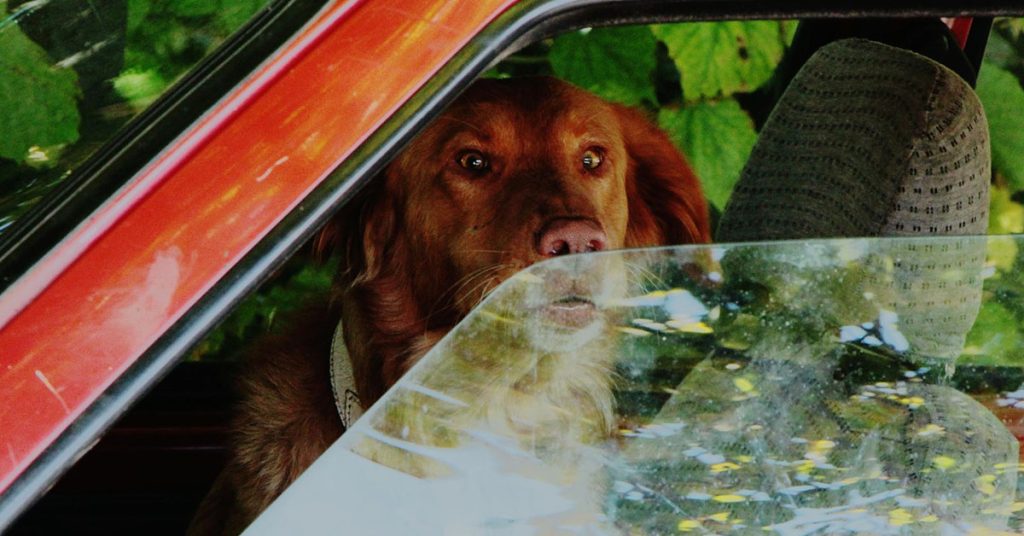Traveling with your dog can be fun, but have you ever noticed your pup panting excessively? It could be an indication of underlying stress or discomfort. In this blog post, we examine the intriguing question: why do dogs pant in the car? Understanding the reasons behind canine travel anxiety is key to making car rides pleasant for you and your pet. Let’s find out why your dog pants in the car and learn how to make it fun!
What is Panting in Dogs?
Panting is a typical physiological response in dogs that helps regulate their body temperature. Unlike humans, dogs don’t sweat profusely to cool down; instead, they pant to dissipate heat. When a dog pants, moisture evaporates from their tongue and mouth lining, allowing them to lose heat.
It’s essential during hot weather or strenuous activities. However, it’s important to distinguish between normal panting and excessive panting, which can indicate underlying anxiety. When you understand what causes dogs to pant in the car, you can figure out why they might do it.
Why Do Dogs Pant in the Car?

The car can be a source of anxiety and stress for dogs despite being familiar to humans. Several factors contribute to dog travel anxiety, leading to panting. Such as:
Heat Regulation
Due to temperature fluctuations and limited airflow, dogs may pant in the car. Unlike a home environment where they can find cool spots to rest, the confined space of a vehicle can trap heat, especially on hot days. During car rides, dogs pant to regulate their body temperature and avoid overheating.
Anxiety and Stress
Various factors can trigger anxiety in dogs in the car environment, including unfamiliar surroundings, vibrations, and movement. The anticipation of arriving at an unfamiliar destination or associating car rides with negative experiences can cause dogs to pant as a coping mechanism.
Motion Sickness
Dogs can also experience motion sickness during car rides, which can cause nausea and discomfort. The symptoms of motion sickness include panting, drooling, vomiting, and restlessness, which indicate that your dog’s body is having a hard time adjusting to the motion.
Lack of Socialization
Without adequate socialization during puppyhood, dogs may develop anxiety about traveling in cars. When placed in an unfamiliar environment like a moving car, dogs may pant and exhibit other signs of stress without positive experiences.
Fear of Loud Noises
Dogs with noise sensitivity or phobias may pant in the car because of traffic sounds, honking horns, and engine noises. Those auditory stimuli can trigger anxiety and stress in sensitive dogs, causing them to pant.
Previous Negative Experiences
When dogs have had negative experiences in the car, like a traumatic event or discomfort during a ride, they may develop a negative association with them. In subsequent trips, this negative conditioning can lead to panting and reluctance to get in the car.
Overstimulation
Certain dogs, especially those with heightened sensory sensitivity, may find the car environment overwhelming. Visual stimuli (passing scenery, moving cars), auditory stimuli (traffic noise, engine sounds), and physical stimulation (vibrations, motion) can cause sensory overload in dogs. The excessive sensory input and arousal levels dogs experience during car rides may cause them to pant.
Tips to Help Dogs Feel More Comfortable in the Car

Creating positive travel experiences for your dog starts with ensuring their comfort and well-being. Here’s how to make car rides less stressful for your dog:
Gradual Desensitization
Slowly introduce your dog to the car, starting with short sessions just sitting in a parked vehicle. Create positive associations by offering treats and praise. Once your dog feels comfortable, you can start with short, low-stress drives around the block. Gradual acclimatization helps your dog get used to the car environment and reduces anxiety.
Creating a Positive Association
Make your dog’s ride in the car fun and rewarding. Provide treats, toys, or special rewards to make car rides more enjoyable. This creates positive associations with being in the car, so your dog will be more eager to get in the car again. You want to reinforce the positive connection with car travel by keeping the experience upbeat and rewarding.
Using Calming Aids
If your dog suffers from anxiety during car rides, try calming aids like pheromone sprays, calming collars, or natural supplements (under veterinary guidance). These products can make your furry friend more comfortable on the journey. Observe how your dog responds and adjust as needed to find the most effective solution for them.
Provide Comfort Items
When you’re in the car, bring familiar comfort items for your dog, like blankets, bedding, or favorite toys. Your dog will feel more comfortable in unfamiliar places if you have familiar scents and objects from home.
Ensuring Proper Ventilation
Ensure your dog has adequate airflow in the car to prevent overheating. Keep your windows cracked open, or use a car vent fan to promote ventilation. On hot days, don’t leave your dog in a parked car, as temperatures can quickly rise. Proper ventilation during car rides can ensure your dog’s comfort and safety.
Taking Frequent Breaks
Take regular breaks while driving to give your dog a chance to stretch their legs, take a bathroom break, and drink water. Short breaks provide opportunities for your dog to relieve tension, reduce stress, and rehydrate. Take your dog on a route with designated rest stops along the way so he’s comfortable and happy.
FAQs
Is it good to take your dog in the car?
Taking your pup in the car is beneficial for both you and your dog. It offers opportunities for exercise, socialization, and adventure. During car rides, it’s important to ensure your dog’s safety and comfort.
It is essential to gradually acclimatize, restrain, or contain your dog and consider its individual needs. With proper preparation and care, car rides can be enjoyable and enriching for you and your dog.
What is the safest seat for a dog in a car?
The back seat is generally the safest place for your pet during a car ride. It minimizes distractions for the driver and provides a more stable environment for your pet. A crate, carrier, or specially designed seat belt or harness adds another layer of safety.
This arrangement ensures your pet’s comfort and security while also reducing the risk of injury. It’s important to prioritize your pet’s safety and well-being when you’re traveling.
Do dogs get bored in the car?
Yes, dogs can experience boredom during car rides, especially on long journeys. Lack of stimulation, confinement, and monotonous scenery can bore them. Keep your dog entertained with interactive toys, chew treats, or puzzle feeders.
To break up the monotony, you can also engage your dog in verbal encouragement, interactive play, or short breaks during the ride.
The Takeaway
It’s important to know why dogs pant in the car for their comfort and well-being. You can prevent panting in your pet by addressing factors like heat regulation, anxiety, motion sickness, and overstimulation. Be sure to prioritize your dog’s safety, comfort, and individual needs to make every car ride an exciting adventure.




